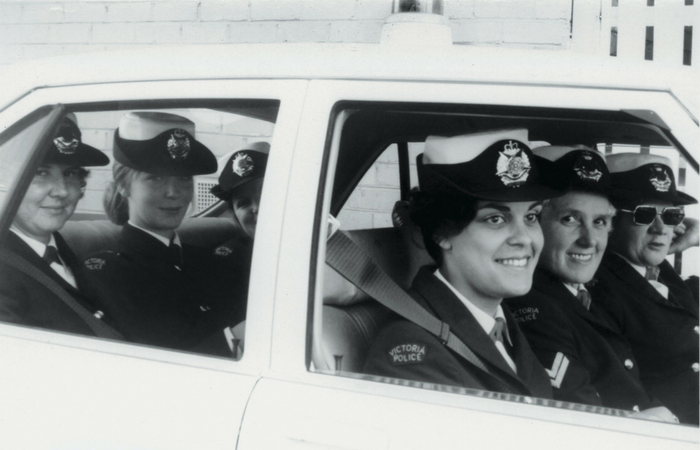On this page
We celebrate and honour the women that have made historical changes in Victoria. They have paved the way for women in Victoria Police both today and for the future.
For over 100 years, female police officers have played vital roles in Victoria Police. And you could join them.
Join the next generation of women in policing
Searching for a role where no two days are the same, that offers flexible working arrangements with great benefits, not to mention endless career paths? A role as a police officer is all that, and more.
Victoria Police is committed to an inclusive, empowering and diverse workplace, with a goal of achieving gender equality by 2030. This is an organisational commitment for the benefit of our people and the community.
Explore a career with more purpose and more possibilities at police officer careers.
Celebrating 100 Years of Women in Policing
On 28 July 1917, Victoria Police employed our first women as 'agents', Madge Connor and Elizabeth Beers.
In July 2017, we commemorated the milestone of 100 years of women in Victoria Police. Our Victoria Police Museum presented a major exhibition in honour of this milestone.
The exhibition explored major breakthroughs and landmark events within Victoria Police. They showed a series of stories through the context of social changes and milestones in the wider community.
The stories highlighted the struggles and discrimination women faced, and how this has shaped equality and diversity in Victoria Police today.
Key historical women
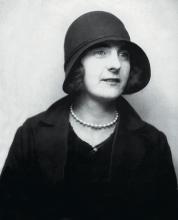
Madge Connor was the first of two policewomen appointed in July 1917. She was paid half the pay of a policeman, with no powers of arrest or rights to a pension. She did not have a uniform.
In 1922, she helped in the undercover surveillance of a witness in the case against Colin Campbell Ross. Quickly accumulating commendations for her work, she was stationed at Russell Street and Fitzroy for most of her career.
As early as 1920, Connor led deputations of female police and watch-house matrons to the chief secretary. They argued for an increase in their salaries. She described the often distasteful duties they had to undertake for seventeen shillings and sixpence per week.
Successful in obtaining a small increase, Connor made further representations in 1923.
In 1924, because of a technicality in the police seniority system, she lost her place as 'senior in service', becoming 'junior in number'.
She continued to bring petty criminals, fortune-tellers and bookmakers before the courts.
Due to age restrictions, Connor was forced to retire on 14 November 1929. As she was not able to complete the necessary fifteen years as a sworn officer, she was ineligible for a police pension.
She went on to operate as a private detective.
Source: Australian Dictionary of Biography
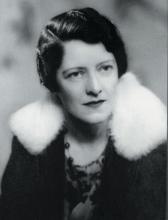
Jessie Clarey was the fourth policewoman of Victoria Police.
She graduated training in 1929, and worked as a typist for the Criminal Investigations Branch.
In 1939, she won the King's Police Gold Medal essay competition, a competition open to the police forces of the British Empire. Her essay discussed the causes and treatments of youth crime.
She was the first woman and the first Australian to win the prize. She had taken leave from work to secretly pen the essay.
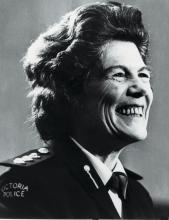
Grace Brebner applied in 1939 after reading a newspaper advertisement. She remarked there was a waiting list of 300 women and she had to wait 3.5 years.
She was the 14th woman inducted overall. At the time of her joining there were eight policewomen in the force.
In her first two years she was commended alongside two constables, for work resulting in a conviction for a man for offences against the Black Marketing Act.
In April 1945 she was commended with five other policewomen for having “successfully cleared up a bad case of murder”.
In 1950, Grace Brebner was appointed to the Criminal Investigation Branch. She was the first policewoman to qualify at the Detective Training School, and became the first female detective in Australia.
She was second in the class, only 1.5 points behind the dux.
In 1956, Brebner transferred back to the Women Police Division as Sub Officer in Charge. Brebner noted that police cars were spare and not able to be used by policewomen. She sought out procedures for a police driving licence and applied for the test.
She later discovered the examiner had been told to ”fail her if you can, we don't want any women driving our bloody cars”. She passed.
In 1971 she became the first policewoman in Victoria to reach Inspector rank. Two years later she became the first policewoman in Victoria to receive Queens Police Medal.
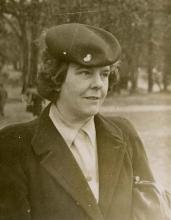
On 27 April 1922 Katherine (Kath) Mackay joined the motor registration branch of the Victorian Public Service as a typist and stenographer.
Later that year she moved to Victoria Police and worked in the Chief Commissioner's office. On 15 April 1930 she became one of eight serving policewomen.
She was initially assigned to the plain clothes branch. By 1935 she was attached to the Criminal Investigation Branch at Russell Street headquarters.
In June 1943 Mackay was promoted senior constable. She was given charge of the policewomen's section, which operated from Russell Street.
Mackay's role and function were largely restricted to welfare and domestic issues, and to cases involving women.
She did not allow herself to be restricted to these cases. She received official commendations in April 1942 for her part in the conviction of a man for incest and in April 1945 for helping to solve a murder case.
She was regarded by her superiors as “well conducted, efficient and reliable”.
Having passed the required examinations, Mackay was eligible for promotion to Sergeant in 1953, however Victorian police hierarchy was unwilling to give a female authority over male colleagues. When two men were promoted ahead of her, Mackay appealed to the Police Classification Board.
The case was dismissed in March 1954. The board felt that Mackay was unfit for the duties of a sergeant in charge of a station.
Since the number of policewomen had increased to 34, the Police Association suggested a reorganisation of the women's section of the Victoria Police. This proposal was implemented in 1956, providing the opportunity to make Mackay a Sergeant.
On 22 August she was appointed Officer in Charge of the new Women Police Branch. She became the first woman in Victoria to achieve such a rank.
Source: Australian Dictionary of Biography
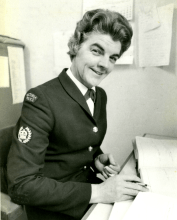
Catherine Margaret McVeigh joined the police force at the age of 24 after serving in the Royal Australian Air Force.
One of her first duties after graduating in 1956 was crowd control at the Melbourne Olympic Games.
McVeigh was known as a trailblazer for women in policing, rising meteorically through the ranks.
In 1986, McVeigh became the first woman in Australia to be appointed to Chief Superintendent.
Major moments
In the early 1900s, key political figures that had earlier pushed for women's suffrage began to fight for the employment of female police officers.
The National Council of Women and the Women's Political Association (including famous suffragette and women's rights activist Vida Goldstein) fought for female police officers.
The issue was debated in parliament. Several deputations of women paid visits to the Chief Commissioner and major Victorian politicians. They campaigned for many years.
The first policewomen joined Victoria Police on 28 July 1917.
The first two women were Madge Connor and Elizabeth Beers, and they were employed as 'police agents'. They were not officially ‘sworn in’.
They received 90 pounds a year in pay. Contrary to newspaper reports at the time, they were given no uniform or powers of arrest.
Before this appointment, women had worked with Victoria Police as 'undercover agents' to gather information.
Elizabeth Beers soon retired and was replaced by Nell Davison, a staunch Salvation Army member.
Ellen Cook and Jessie Clarey later joined.
In 1924, four policewomen became the first to be ‘sworn in’ into the police force, with the same pay and rights as policemen. These women were Madge Connor, Ellen Cook, Mary Cox and Nell Davidson.
This was achieved 7 years after the first women were employed.
They did not receive overtime or necessarily equal pay for equal work. They were not supplied a uniform, so had to buy their own clothing that was deemed acceptable for a policewoman.
During the Second World War (WW2), a large segment of the police force left to fight overseas. Victoria Police, like many other major organisations (including the Army) called for an 'Auxiliary force' of women to fill their places.
Throughout the war, and for some years after, Victoria Police employed over 200 Auxiliary policewomen. The Auxiliary policewomen were not sworn police, however, they were given a uniform before policewomen.
Social movements championing women's rights began to have an impact on Victoria Police recruitment. More women began to join, and more women pushed for diverse roles.
The 70s and 80s saw a major change in the roles women took in the police force.
The Equal Opportunity Act was implemented within Victoria Police in 1978. The Act removed separate seniority lists and the identification of policewomen on their caps by a PW badge.
It also removed the marriage bar, which meant that married women were able to join, and single women were able to remain in their roles after marriage.
Women transferred into general duties and began to receive the same training as policemen, including self-defence and pistol training. They were officially able to carry handcuffs, batons, and guns.
Timeline of major events
2017 We commemorate 100 years of women in Victoria Police. 2012 New uniforms are introduced for both policemen and policewomen. 2005 Constable Melissa Jardine wins an award for outstanding achievement in completing a 20 week Vietnamese language course. This was part of the Victoria Police Multicultural Commission.
Jennifer Locke wins the International Association of Financial Crimes Investigators Police Officer of the Year award for the Australian southern region. She won this for her work on Operation Tesla.2003 Constable Ezo Girgin is the first Muslim policewoman in Victoria. 2002 Natalie Cale is the first woman appointed to a one-man (now one person) police station. 2001 Christine Nixon is appointed as the first female Chief Commissioner of Police in Australia.
Senior Sergeant Robyne McGowan is appointed Officer in Charge of Moreland Traffic Management Unit (TMU), ahead of 16 other candidates. She is the first female to head a TMU.
Detective Sergeant Deb Bennet becomes Australia's only qualified criminal profiler employed to work in behavioural analysis.2000 Jocelyn O'Brien and Kathryn Joyce are the first women in the Dog Squad. 1999 Penelope Palmer is the first Vietnamese born woman to join Victoria Police. She studied at Monash University, and completed a paper on the relationship between the Vietnamese community and Victoria Police.
Rebecca Caskey is the first woman to join the Search and Rescue Squad.1994 The Past and Present Women Police Association is formed. 1993 Jenny Wiltshire becomes the first policewoman permanently placed in the Homicide Squad. 1989 Bernice Masterson is appointed as the first female Assistant Commissioner in Victoria Police.
Heather Morris becomes the first policewoman to become an operational solo motorcycle rider.1988 The first group of female protective service officers are appointed. 1986 Angela Rose Taylor is the first policewoman murdered on duty (Russell Street Bombings).
Tarina Martyn is the first female Aboriginal police member.1984 Catherine Margaret McVeigh becomes the first policewoman promoted to rank of Superintendent. 1982 The policewomen's division is abolished.
Joan Notting is the first woman appointed as Officer in Charge of police station.1981 Pants are introduced into policewomen's uniform. 1980 Policewomen are able to apply for handcuffs and batons. 1978 The Equal Opportunity Act comes into effect.
Policewomen begin to transfer to general duties policing.1977 Sergeant Fran Corrie is the first to qualify as an air observer with the Air Wing.
Anne Cursio becomes first women to be awarded the Queens Gallantry Medal.1975 Bernice Masterson becomes the first woman to dux Detective Training school. 1974 Sharon Armfield and Marilyn Cooke become the first women in the Mounted Branch. 1973 Grace Brebner is first policewoman in Victoria to receive the Queens Police Medal. 1972 The requirement for female police recruits to be single is abolished.
Marcia R Caulfield becomes the first married woman to graduate. She later went on to become Australia's first fully trained hostage negotiator. She trained in the United States of America.1971 Grace Brebner becomes the first policewoman in Victoria to reach Inspector rank. 1966 Carol Baker is the first woman to undergo a police driver training course. 1961 Five policewomen are the first females to attend Vehicle Safety Testing School. 1960 Women take the first three places (dux, second and third) amongst graduate recruits. 1956 Kath Mackay is first woman to become Sergeant. 1951 Grace Brebner becomes first female detective in Australia. 1950 Grace Brebner is appointed to Criminal Investigations Branch. 1948 Elva Carr organises the first female street patrol. She shows that women capable of more than welfare work within Victoria Police. 1947 A uniform for policewomen is introduced. This is achieved 23 years after their first appointment. 1943 Kath Mackay is promoted to Senior Constable. This marks the appointment of the most senior woman to date. 1942 The Women's Auxiliary Force appoints women as drivers, clerks, and receptionists during WW2.
The first all-female squad is established. It was the largest single increase in policewomen employment so far.1929 The number of policewomen increases to eight. 1924 The number of policewomen increases to four.
Policewomen are sworn in with same pay and rights as policemen (although they did not necessarily receive equal pay for equal work, and were not paid for overtime).1917 Madge Connor and Elizabeth Beers are the first women appointed in Victoria Police. They are appointed as agents.
Apply to be a police officer with Victoria Police
Are you made for more? Take the first step towards an exciting new career.
Already started your application?
Continue your police officer application by logging in to our careers portal.
Updated
